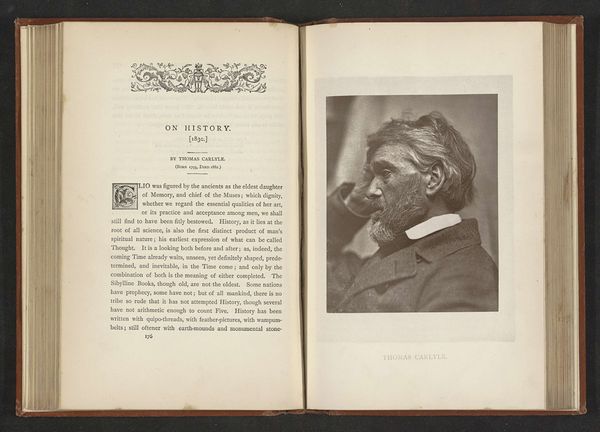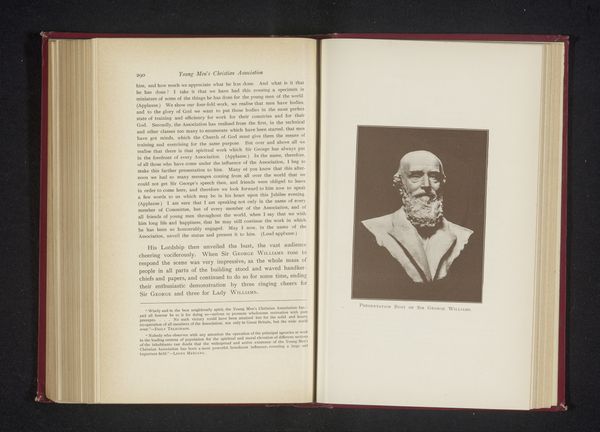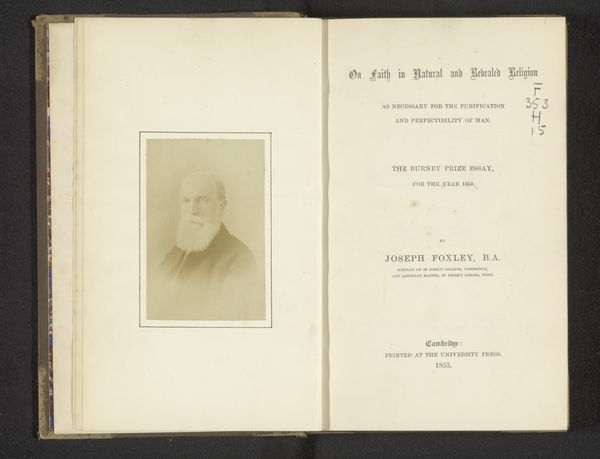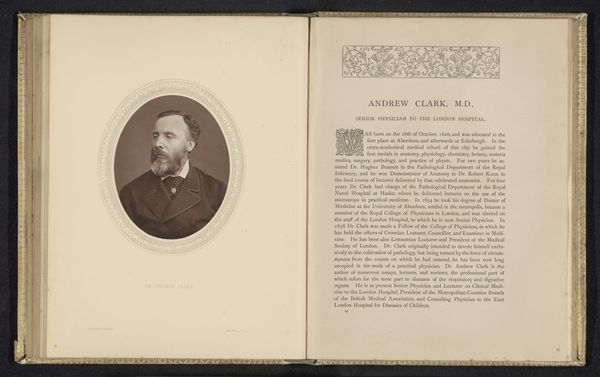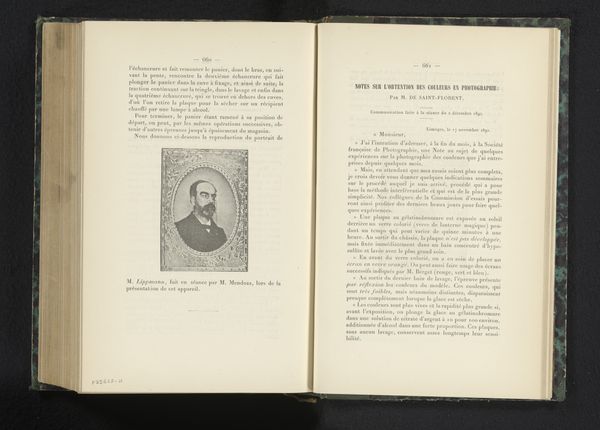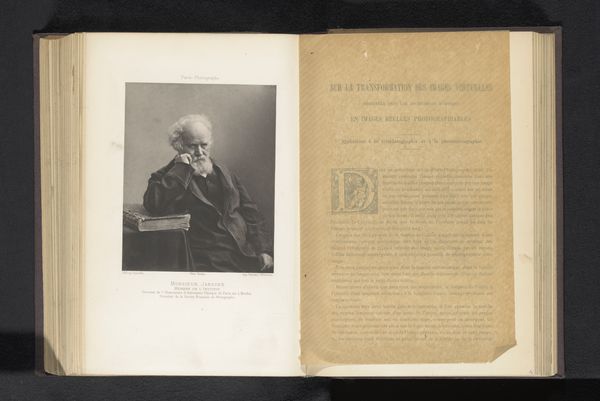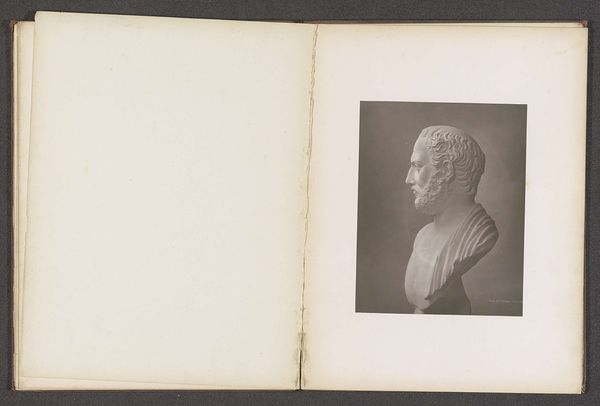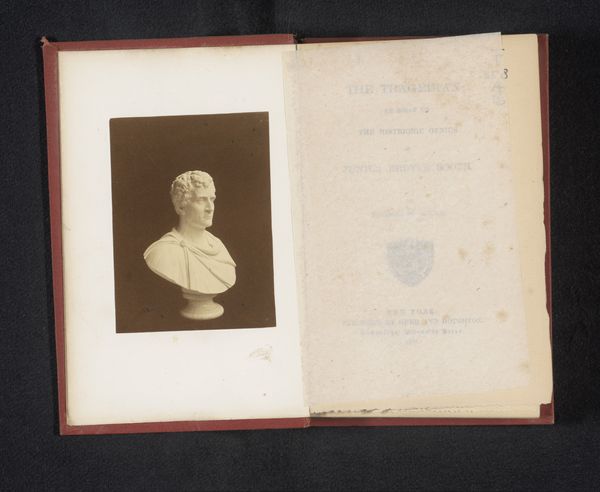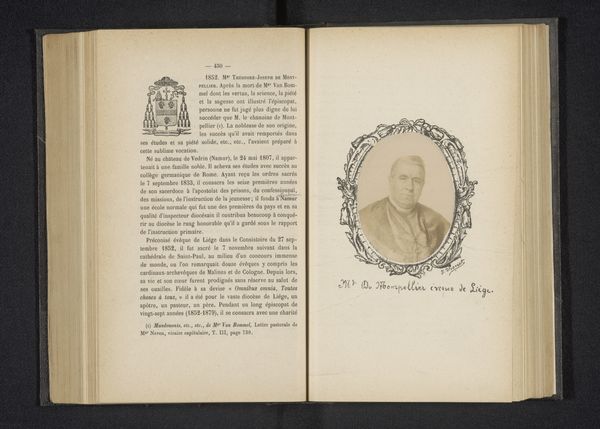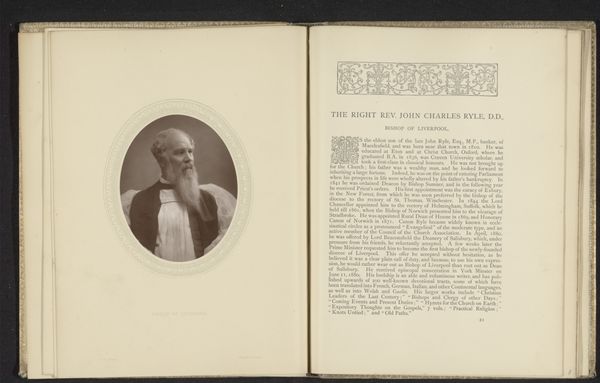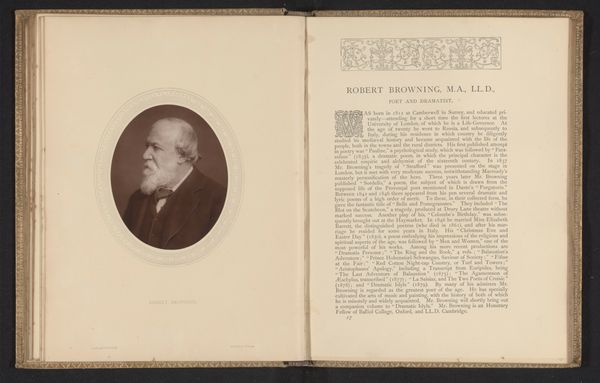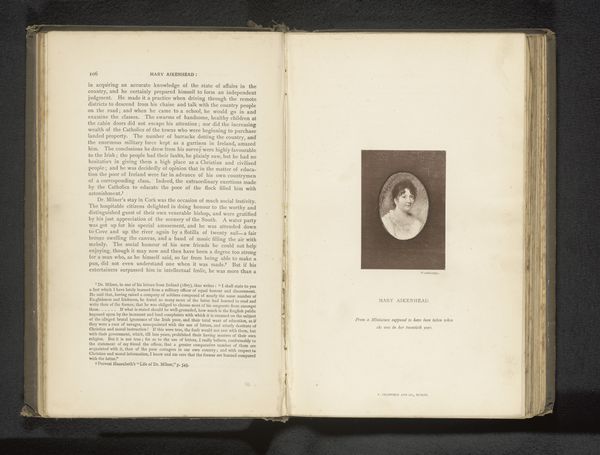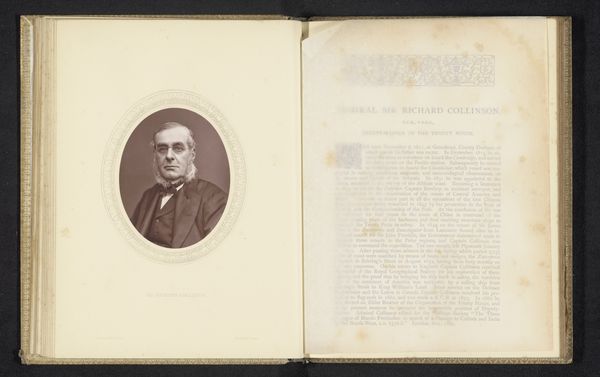
Dimensions: height 126 mm, width 102 mm
Copyright: Rijks Museum: Open Domain
Editor: So this is a portrait of Rudolph II. It’s described in the museum’s records as bronze on a slab of black Dutch marble, dating from before 1876. It strikes me as incredibly regal. What are your initial thoughts when you see it? Curator: Well, immediately, I consider the complexities of power, especially concerning representation and how Rudolph II wished to be seen. His rule was marked by religious conflict and political instability. Think about how portraiture during this era often functioned as propaganda. Editor: Propaganda, really? Curator: Yes! It was about solidifying an image. Rudolph II was Holy Roman Emperor during a period of immense upheaval. What details do you notice in the sculpture itself that might speak to this image construction? Editor: I see all this intricate armor, which suggests military strength, even though his reign wasn't particularly known for military victories. It's quite performative, isn't it? Curator: Exactly. It is about projecting power, maybe even compensating for weaknesses. And who had access to this image? Who was the intended audience? These questions lead us to consider the role of the artwork in reinforcing hierarchical structures. Do you get a sense of that? Editor: Absolutely. This wasn't just art for art’s sake; it was very deliberately constructing a specific narrative of imperial authority. Curator: Precisely. Examining it critically through that lens lets us really dig into the complex relationship between art, power, and social control. Editor: I didn’t consider portraiture as political discourse, so I'll be looking at other sculptures in new ways from now on.
Comments
No comments
Be the first to comment and join the conversation on the ultimate creative platform.
